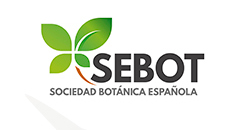Scientific Area
Abstract Detail
Nº613/1808 - Explainable AI powered by shape analysis to capture the phenotypic variation of plants in the field and in herbaria
Format: ORAL
Authors
Ladislav Hodac1,Kevin Karbstein1,Lara Ksters1,Michael Rzanny1, Hans C. Wittich2, David ubrt3, Patrick Mder2,4,5,Jana Wldchen1,4
Affiliations
1 Department of Biochemical Integration, Max Planck Institute for Biogeochemistry, Jena, Germany
2 Data-intensive Systems and Visualization Group, Technical University Ilmenau, Ilmenau, Germany
3 Faculty of Science, Jan Evangelista Purkyne? University, U´sti´ nad Labem, Czech Republic
4 German Centre for Integrative Biodiversity Research – iDiv (Halle-Jena-Leipzig), Leipzig, Germany
5 Faculty of Biological Sciences, Friedrich Schiller University Jena, Jena, Germany
Abstract
Plant leaves vary not only between species, but also within populations of the same species. A persistent challenge in botany is to accurately document this variation directly in a plants natural environment. In this study, we investigate the phenotypic variation of buttercup leaves in natural plant populations using an easy-to-use smartphone app called Flora Capture, designed for citizen scientists. We exploit the strengths of machine learning and geometric morphometrics to address three key questions: (1) Can smartphone images effectively capture leaf variation comparable to traditional herbarium methods? (2) Do image differences detected by computer vision correspond to actual variation in leaf shape? (3) Can smartphone images of leaves achieve detailed resolution for identifying plants at high taxonomic levels? Our approach incorporates several deep learning techniques, including Grad-CAM for interpretable AI and EfficientNet for feature extraction from images. We analyze the same leaves using computer vision and quantitative morphology - by extracting their shapes using landmark geometric morphometrics. Through dimension reduction and covariation analysis, we discover common patterns in both the image features and the corresponding biological shapes. Using machine learning algorithms such as Random Forest and Support Vector Machine, we evaluate the suitability of leaf images for classifying plant populations at high taxonomic levels. The goal is to understand the decision-making processes of computer vision in biological shape classification. This work represents a step towards reliable and reproducible phenotyping of plants in their natural habitats.




